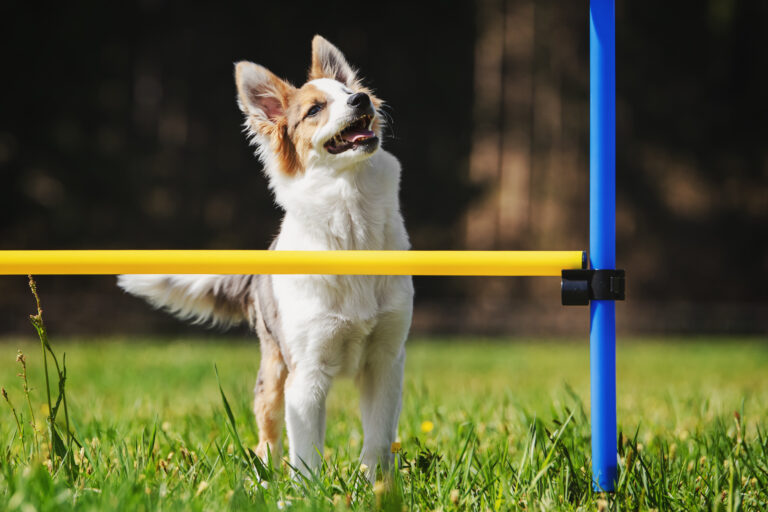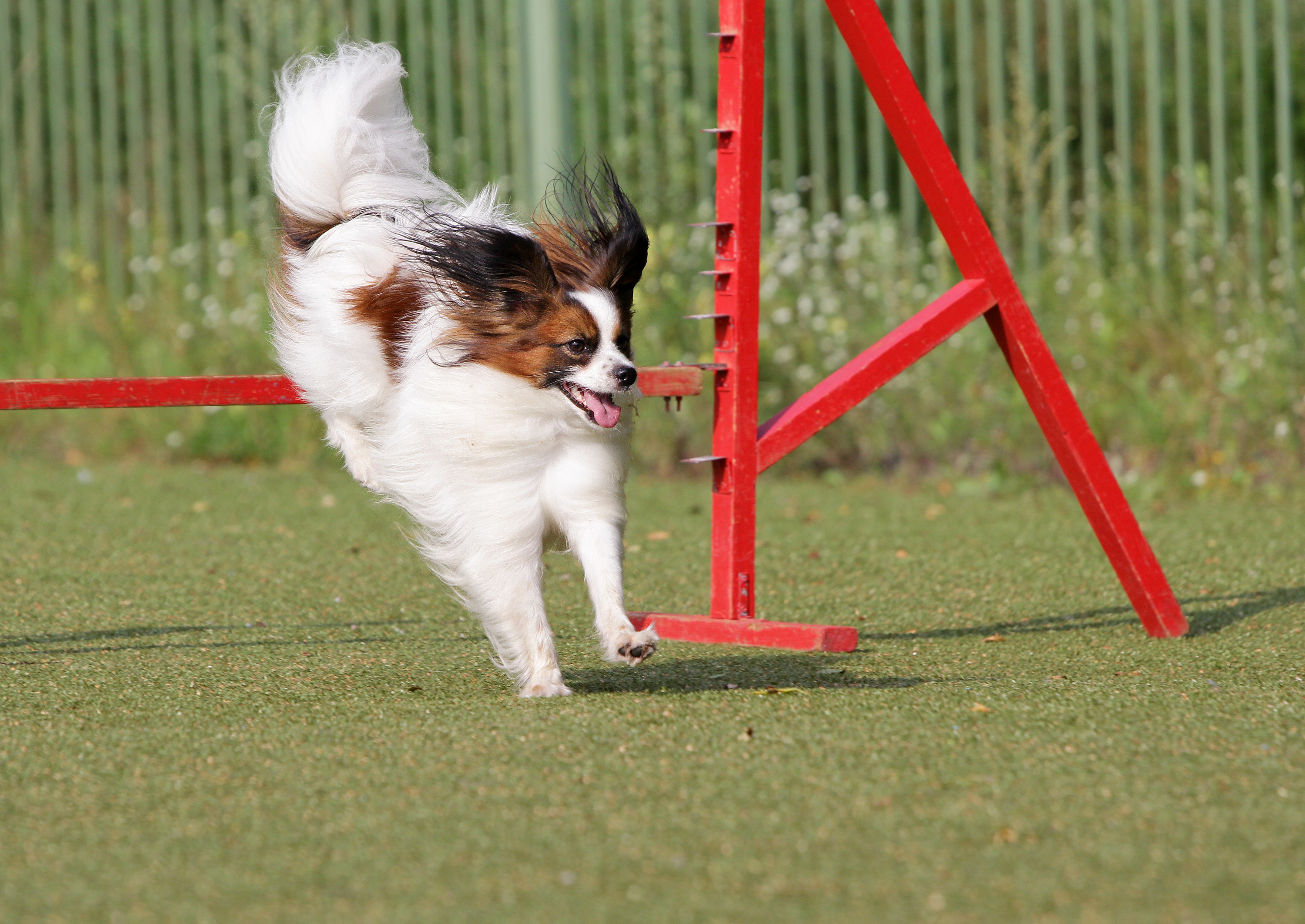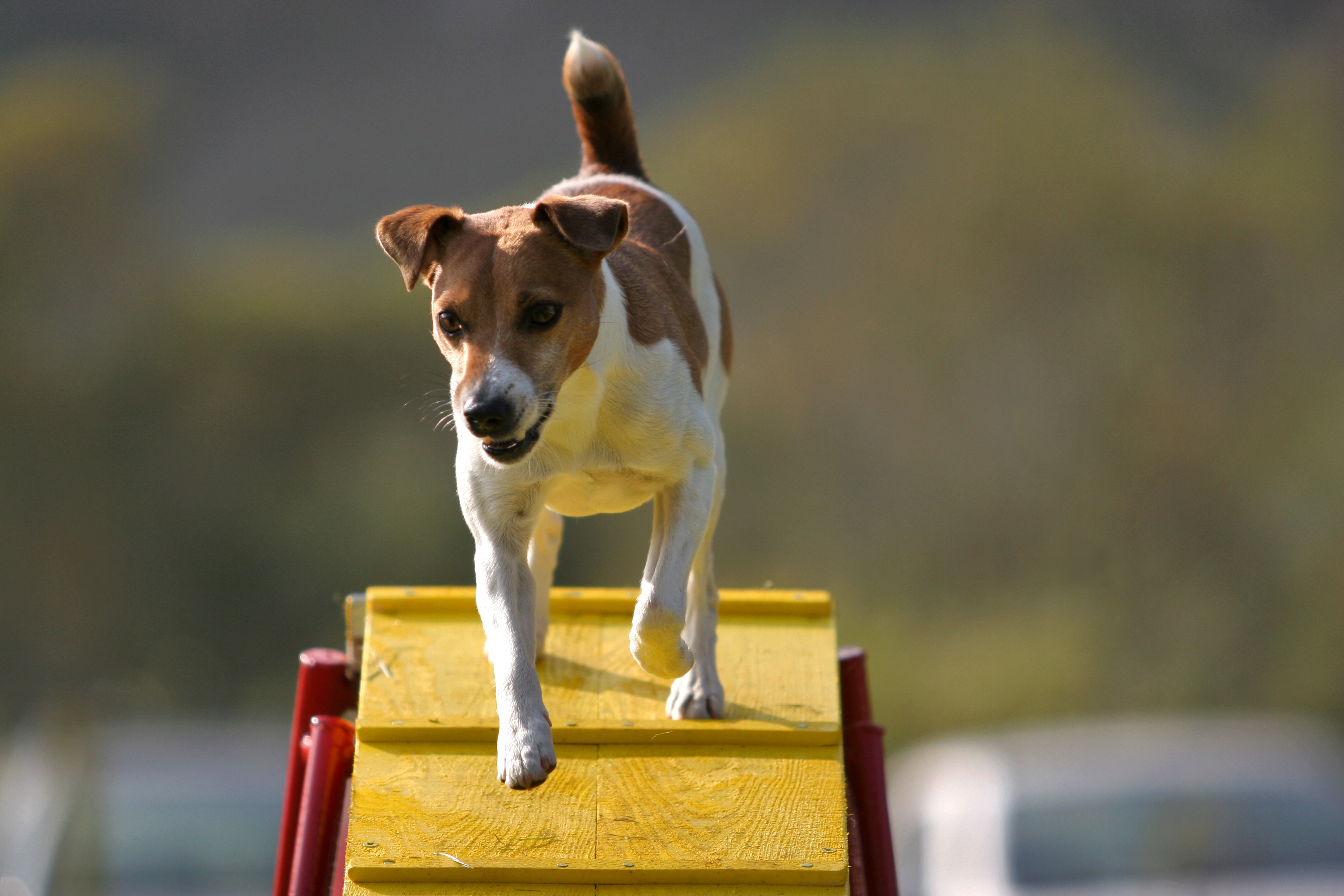Hiking with Dogs – Everyday Adventures
Be it short hikes in the surrounding area, day trips at the weekend or whole hiking holidays with your dog, hiking is a great hobby for human-canine teams!
Only for big dogs? No way! Small dogs too can have plenty of fun with agility. Find out here whether your little dog is suited to this dynamic dog sport and which five factors you as a dog owner have to take into account.

© M.Dörr & M.Frommherz / stock.adobe.com
Agility is now one of the most popular types of dog sport in the world. After all, sports training to get through an obstacle course consisting of tunnels, seesaws, tyres or slalom poles without making mistakes isn’t just great fun, but also improves communication between dogs and humans and helps them to live in harmony together in day-to-day life too. So it’s no surprise that more and more owners of smaller dogs are interested in this diverse sport originating from Britain. However, many owners of Malteses, Toy Poodles or small terriers have inhibitions when it comes to competing with Border Collies and such in terms of agility.
With agility, most of us think of Border Collies or other large dog breeds that love to run. In contrast, we don’t associate small terriers or Toy Poodles with this type of dog sport. However, little dogs too can have plenty of fun with agility and complete obstacle courses quickly and skilfully. Thankfully many dog schools, associations and competition organisers have recognised this too and now offer extra training courses and competitions for small dogs. Consequently, agility is now no longer just a sport for large dogs!
In principle, all dogs can do agility regardless of their size. Due to their low weight, small dogs often even have the advantage of hardly developing any joint problems and therefore have less cause to fear health problems triggered by sporting activities.
Fun is the most important thing with agility and little four-legged friends should of course be enthusiastic about seesaws, tunnels and the like. Little lapdogs that are happiest being carried around are definitely not suitable for rapid dog sports. Toy dogs that enjoy running, are curious, enjoy learning new things and spending time with their family are guaranteed to take great joy in agility training. Such active small dog breeds include, for instance, Toy Poodles, Shetland Sheepdogs, Parson Russell Terriers, Wire Hair or Smooth Fox Terriers.
 © zelenka68 / stock.adobe.com
© zelenka68 / stock.adobe.com
Along with fun, health of course also plays a big role with dog sport. After all, sport should keep dogs fit and healthy and not make them sick. In fact, agility can be harmful for dogs with a long back and short, crooked legs. Dachshunds or Basset Hounds, for instance, have difficulty jumping with their short legs and also twist their long spine too much when overcoming obstacles. Hence, agility isn’t ideal for dogs with this type of anatomy.
If your toy dog has a normal physique and is also in good health and enjoys exercise, there’s nothing to stop you taking part in agility sessions. Many dog schools offer extra courses for small dogs. The advantage is that the obstacles are adapted to their smaller size and don’t need to be swapped constantly due to dogs of different sizes taking part in the training session. Even ambitious human-dog teams aiming to take part in agility competitions don’t need to worry that they will suddenly have to measure up to larger dogs, because dogs are split into three size categories in agility competitions (mini, midi and maxi). Small dogs reaching a maximum shoulder height of 34.99cm take part in the mini competition, with obstacles at a maximum height of 35cm. This ensures that only dogs with approximately the same physical conditions compete against each other and that the obstacles aren’t too high for them.
Regardless of whether it’s for fun or sporting ambition, anyone who wants to practise agility with their dog should ensure that this sport is the right choice and that their dog enjoys training with them. Dogs that struggle to motivate themselves even just to go for a walk won’t be particularly enthused by dynamic obstacle courses – after all, they have to complete the course as fast as possible without a lead and simply by acclamation. Hence, enjoying exercise is a key requirement for taking part in agility. If you wish to do agility with a small dog though, you should also take into account the following five things along with the fun factor.
As previously mentioned, sport should be fun and not cause health problems. Before you start agility with your dog, you should therefore make sure that sport doesn’t impinge upon its health and worsen potential joint problems. Although mainly larger and heavier dog breeds are affected by joint diseases like hip or elbow dysplasia (HD/ED), smaller breeds too can sometimes develop problems with the locomotor system. Your vet will be able to tell you after an examination whether agility will be harmful to your dog’s health.
Although small dogs never end up big, you should wait with agility training until your toy dog is fully grown. Even for small terriers, Poodles or Malteses, premature physical activity can be extremely unhealthy and can lead to joint problems and slipped discs later on. Hence, dogs should first be fully grown. Indeed, only dogs that are least 18 months of age are allowed to take part in official agility tournaments.
 © Cerae / stock.adobe.com
© Cerae / stock.adobe.com
It’s very important that sporting equipment like hurdles, obstacle poles and tunnels or seesaws are adapted to your dog’s size. A small Shetland Sheepdog definitely won’t enjoy itself if it has to jump over the same obstacles used for Shepherd Dogs or Huskies. Nowadays there is a whole range of agility equipment specially devised for small dogs. Dog schools offering extra courses for small dogs of course make sure that the obstacles are suitably low.
Even if your small dog is extremely lively and wants to get started straight away when it sets eyes upon the obstacle course, you should make sure that its body is prepared for the quick sprints, tight turns and high jumps. Your dog must perform at its best in agility and can’t just start with this off the cuff. A short warm-up before training can hugely reduce the risk of injury. Special warm-up exercises or at least a short jogging session with your dog are recommended following the drive to the training area. In winter, a dog blanket also helps to stimulate circulation and keep your dog’s body warm for dog sport.
Many small dogs can’t get enough of dog sport and are huge fans of agility. They tirelessly jump over hurdles, run over seesaws and through tunnels and want to start all over again as soon as they reach the end of the course. However, you as the owner must make sure that your dog doesn’t overexert itself. Damage to the locomotor system due to excess strain is unfortunately common and definitely shouldn’t be taken lightly. Regular breaks and training that develops slowly are therefore essential and your dog will look forward to its next agility session all the more!
Be it short hikes in the surrounding area, day trips at the weekend or whole hiking holidays with your dog, hiking is a great hobby for human-canine teams!
Cheap and yellow – tennis balls are popular dog toys. However, models designed for sports are unsuitable for four-legged friends and pose certain risks. Find out below why the classic tennis balls can be dangerous for dogs and which pet-friendly alternatives are available.
Only for big dogs? No way! Small dogs too can have plenty of fun with agility. Find out here whether your little dog is suited to this dynamic dog sport and which five factors you as a dog owner have to take into account.